Key points
An amount can be decreased by a percentageA fraction expressed as the number of parts per hundred and recorded using the notation % in different ways:
By working out the decrease and subtracting it from the original value.
By considering the resulting overall percentage and using a multiplierThe number by which another is multiplied. For example, in the calculation 80 x 1∙2, the multiplier is 1∙2.
To be able to decrease an amount by a percentage, you need to be able to work out percentages of an amount, convert percentages to decimals and decimals to percentages.
Identifying multipliers is a useful technique to use for this method. Processing calculations in one step can save time.
Calculate the percentage decrease and subtract from original amount
To decrease an amount by a given percentage:
- Work out the percentage of the amount. There are different ways to do this, choose your preferred method:
a. Combining other percentages. For example, 20% is two lots of 10%
b. Using equivalent fractions. For example 20% is the same as 1⁄5
c. Using a calculator. For example to work out 20% divide 20 by 100 and multiply by the amount.
- Subtract from the original amount.
Examples
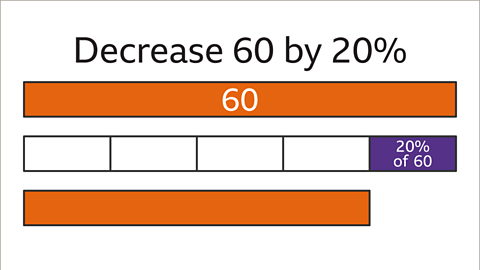
Image caption, To decrease 60 by 20%, work out 20% of 60, then subtract it from the original amount (60)
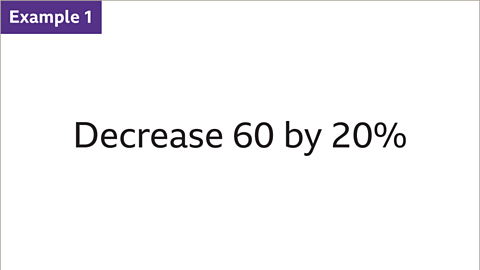
Image caption, Decrease 60 by 20%
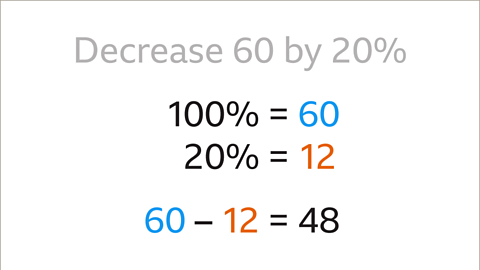
Image caption, 60 is 100%. Work out 20% of 60 using your preferred method. 20% of 60 is 12. Subtract this from the original amount. 60 – 12 = 48
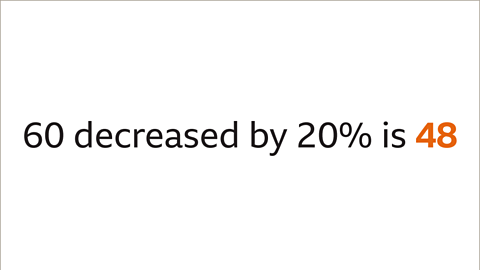
Image caption, 60 decreased by 20% is 48
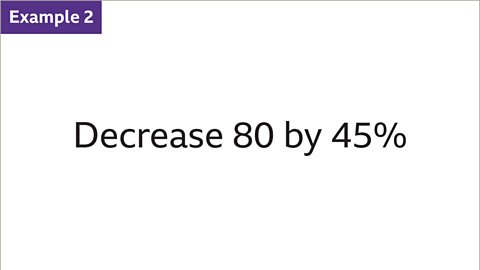
Image caption, Decrease 80 by 45%
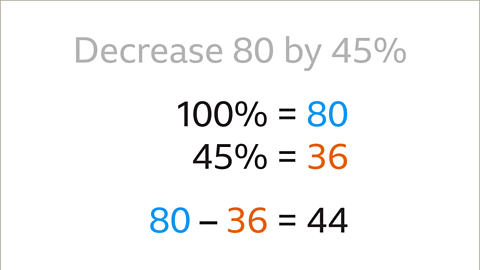
Image caption, 80 is 100%. Work out 45% of 80 using your preferred method. 45% of 80 is 36. Subtract this from the original amount. 80 − 36 = 44
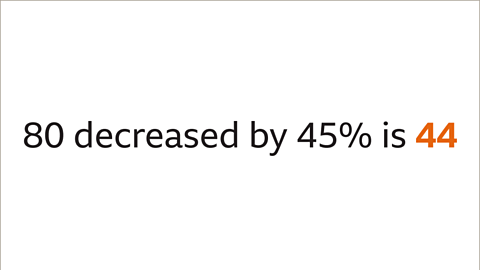
Image caption, 80 decreased by 45% is 44
1 of 7
Question
Decrease 50 by 30%
50 is 100%
Work out 30% of 50. 30% of 50 is 15
Subtract the 30% from the original amount (50)
50 - 15 = 35
50 decreased by 30% is 35

How to decrease an amount by a percentage using a multiplier
To decrease an amount by a percentage using a multiplierThe number by which another is multiplied. For example, in the calculation 80 x 1∙2, the multiplier is 1∙2:
The original amount is 100%.
Subtract the percentage the amount is being decreased by to get the remaining percentage.
Convert the remaining percentage value to a decimal by dividing by 100. This is the multiplier.
Multiply the original amount by the multiplier.
Examples
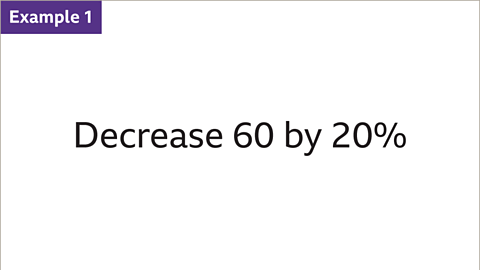
Image caption, Decrease 60 by 20%
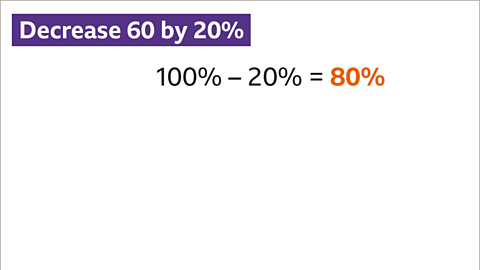
Image caption, The original amount (60) is 100%. Subtract the percentage the amount is being decreased by (20%). This gives the remaining percentage (80%)
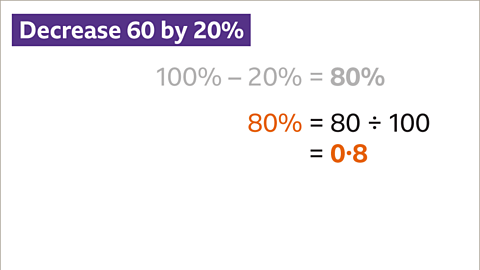
Image caption, Convert the remaining percentage (80%) to a multiplier by dividing the remaining percentage value by 100. 80 ÷ 100 = 0∙8
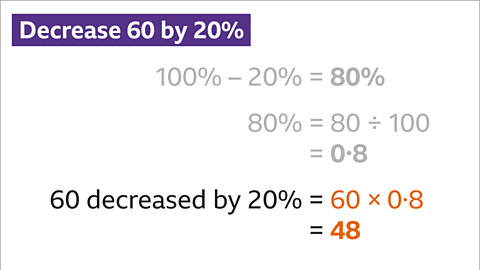
Image caption, To decrease 60 by 20%, multiply the original value (60) by the multiplier (0∙8). 60 × 0∙8 = 48
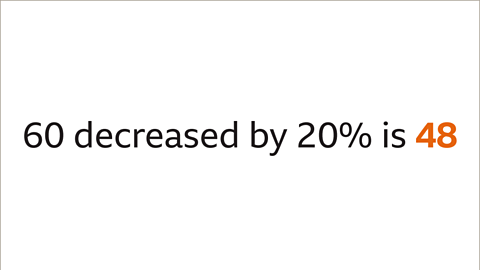
Image caption, 60 decreased by 20% is 48
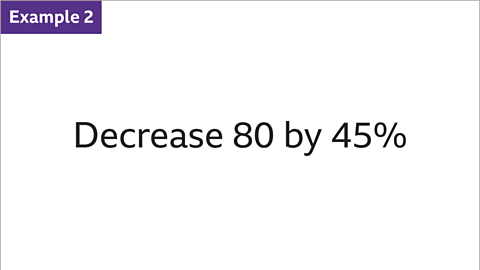
Image caption, Decrease 80 by 45%

Image caption, The original amount (80) is 100%. Subtract the percentage the amount is being decreased by (45%). This gives the remaining percentage (55%)
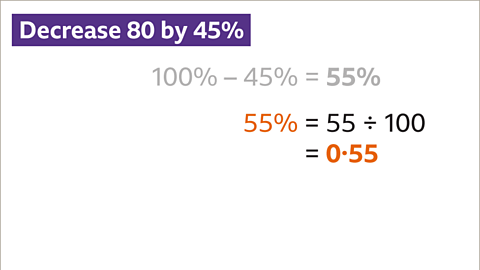
Image caption, Convert the remaining percentage (55%) to a multiplier by dividing the remaining percentage value by 100. 55 ÷100 = 0∙55
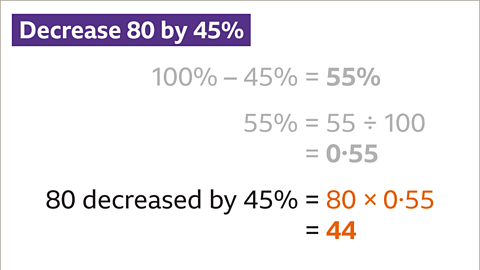
Image caption, To decrease 80 by 45%, multiply the original amount (80) by the multiplier (0∙55) 80 × 0∙55 = 44
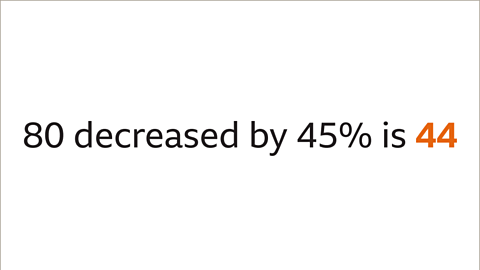
Image caption, 80 decreased by 45% is 44
1 of 10
Question
Decrease 800 by 24%
The original amount is 100%. 800 is 100%
Subtract the percentage the amount is being decreased by (24%) to get the remaining percentage (76%)
100% - 24% = 76%
- Convert the remaining percentage (76%) to a decimal by dividing the remaining percentage value by 100
76 ÷ 100 = 0∙76. This is the multiplier.
- Multiply the original amount (800) by the multiplier (0∙76)
800 × 0∙76 = 608
800 decreased by 24% is 608
Practise how to decrease an amount by a percentage
Practise how to decrease an amount by a percentage in this quiz.
Quiz
Real-world maths

As part of a membership to a leisure centre, members are able to get a percentage discount at a sports shop. The price a member has to pay will be the original price decreased by a percentage. For example, if the discount is 20%, a pair of trainers priced at £90 will be £72 (100% – 20% = 90 – 18)
Healthy eating and drinking trends have led to many food companies reducing the sugar content in their products by a percentage. This enables them to produce healthier products and retain their sales.

Game - Divided Islands
Play the Divided Islands game! gamePlay the Divided Islands game!
Using your maths skills, help to build bridges and bring light back to the islands in this free game from BBC Bitesize.

More on Percentages
Find out more by working through a topic
- count7 of 7

- count1 of 7
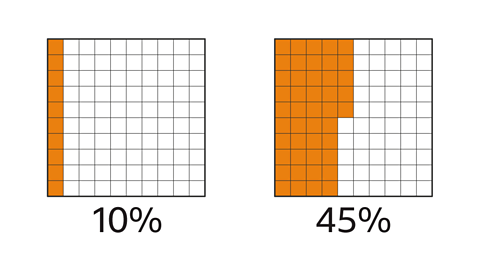
- count2 of 7
